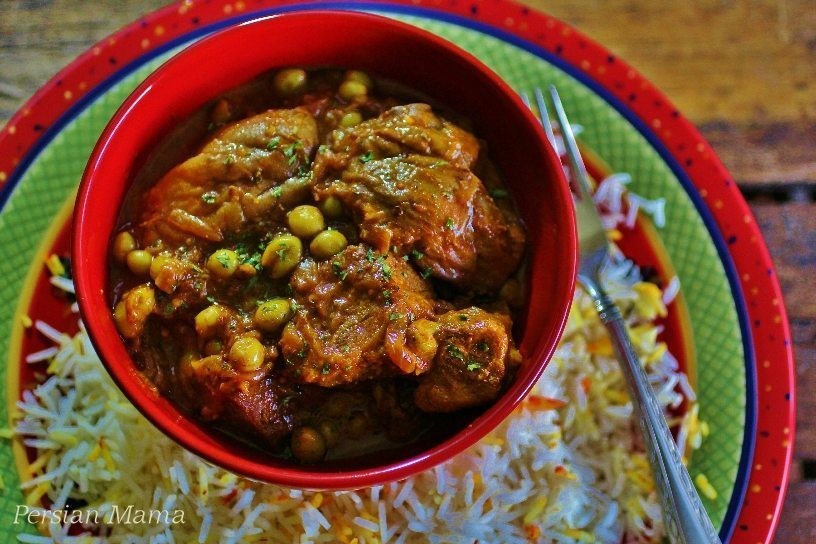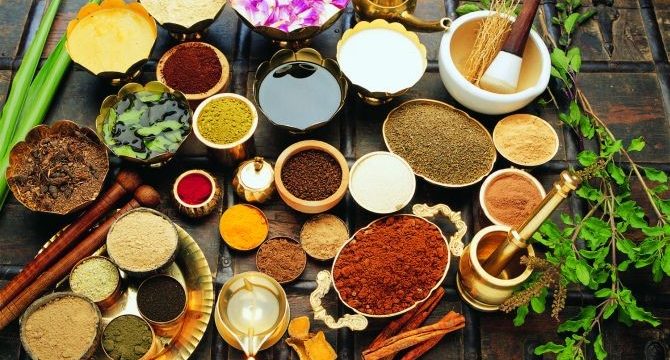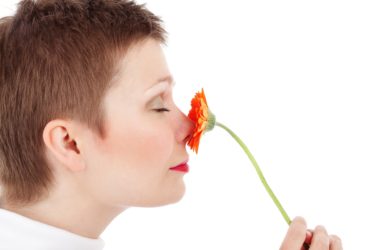BY: ROB HALLINAN
A Word of Caution
I want to preface this article by stating that I am not a medical doctor and this article is not intended as medical advice. Consult with your physician before adding any dietary supplement to your daily routine.
Caution should be taken when looking for ayurvedic supplements. In 2009, researchers analyzed 193 ayurvedic supplements purchased online and found that roughly 20% of the samples tested contained lead, mercury, arsenic or some combination thereof.
Always look for supplements that have been verified or certified by an organization like NSF International or USP to ensure product safety and purity.
Introduction
When you see the word ayurveda, what comes to mind? Maybe if you’re a devout yogi, you’re getting excited just thinking about the topic. On the other hand, you might have already written off this traditional system of “medicine” as a bunch of pseudoscience. Or, maybe you’ve never heard of ayurveda and are just wondering how on earth you pronounce it.
Regardless of which group you fall into, my aim with this article isn’t to provide an exhaustive overview of ayurveda. Rather, I’ll provide a brief history of the ayurvedic tradition before looking at a few prominent features of this traditional system of medicine as they relate to food and nutrition science.
What is Ayurveda?
Ayurveda (or ayurvedic medicine) is one of the world’s oldest traditional systems of medicine that originated in India around 5,000 BCE. It originated as an oral tradition, passed down from one generation to the next by word of mouth, but eventually found its way into the ancient Indian texts – the Vedas.1 Three of these early texts, dubbed the “Great Trilogy”, are the principle texts that cover ayurvedic medicine, Charaka Samhita, Sushruta Samhita, and Astanga Hridaya.2 The term ayurveda stems from two Sanskrit words: ayuh (meaning life) and veda (meaning knowledge – the knowledge of longevity and life).1
This ancient health care system details both preventative and curative aspects of specific medicinal herbs, special diets, and other unique natural health practices. At the core of ayurvedic medicine, there is an emphasis on the key concepts of universal interconnectedness (among people, their health, and the universe), the body’s constitution (prakriti), and life forces (dosha); which are three fundamental energies whose proportions determine one’s physical and emotional state. These three principles are emphasized by ayurvedic practitioners who take a holistic approach in prescribing individualized treatments.2

http://www.thebrunettediaries.com/wp-content/uploads/2018/04/Vedaa.jpg
Today, traditional ayurvedic medicine is still widely practiced in India and has gained popularity in Western cultures as an alternative form of medicine.
What’s the Evidence?
While the religious and spiritual aspects of ayurvedic medicine are unsubstantiated by the scientific literature, many of the positive health benefits associated with the oral ingestion of various ayurvedic herbs and plants are being validated scientifically for their historical claims.3
In order to develop new therapeutic strategies for disease prevention and treatment, considerable research has been conducted on some of the medicinal herbs and plants used in ayurveda. Researchers have identified and isolated numerous bioactive compounds found in ayurvedic herbs that exert beneficial physiological effects on a range of pathological states within the human body.
These bioactive compounds will be the focus of the remainder of this article. While there are over 15,000 medicinal plants and herbs mentioned in ayurvedic texts, I’m going to hone in on two in particular that have shown real promise in a clinical research setting: turmeric and ashwagandha.4
Turmeric
Turmeric is a plant that has a very long history of medicinal use within the ayurvedic tradition. It dates to nearly 4,000 years ago to the Vedic culture of India, where it was commonly used as a culinary spice and held some religious significance.5

https://www.healthline.com/hlcmsresource/images/tumeric-powder-root-1296×728.jpg
Turmeric (Curcuma longa) is a rhizomatous herbaceous perennial plant that is part of the ginger family, Zingiberaceae. This plant is native to the Indian subcontinent and much of Southeast Asia. It thrives in an environment with considerable annual rainfall and a temperature range between 20°C and 30°C (or 68°F and 86°F). The rhizome (underground stems) of the plant is where turmeric is derived from. It is collected, dried, and ground into a yellow powder with a characteristic bitter, slightly acrid, yet sweet, taste.5
Within turmeric there are three coloring agents collectively called curcuminoids that have biological activity in the human body. These curcuminoids, which generally make up 1 – 6% of turmeric by weight, include curcumin (60 -70% of curcuminoid extract), demethoxycurcumin (20 – 27% of curcuminoid extract), and bisdemethoxycurcumin (10 – 15% of curcuminoid extract).6

https://www.ncbi.nlm.nih.gov/pmc/articles/PMC5346970/
https://www.ncbi.nlm.nih.gov/pmc/articles/PMC5346970/
Curcumin, the major curcuminoid in turmeric, is highly lipophilic and acid stable in the pH of the stomach. However, it has been shown to have very poor bioavailability (portion of compound that reaches systemic circulation) when ingested orally.6 Because of this, several methods have been developed to significantly increase the bioavailability of this compound upon ingestion:
- Coingestion with piperine, the bioactive compound found in black pepper extract. Piperine has been shown to increase the bioavailability of curcumin 20-fold when 20 mg of piperine is ingested with 2,000 mg of curcumin by altering intestinal absorption and inhibiting the enzymes involved in the metabolism of curcumin.7
- Curcumin complexed with phosphatidylcholine, readily found in egg yolks and soybeans, can greatly increase its incorporation into lipophilic membranes. Peak plasma levels and area under the plasma concentration time curve (AUC) values for a curcumin-phosphatidylcholine complex (known as Meriva) were 5-fold higher than unformulated curcumin.8
- Curcumin dispersed with colloidal nano-particles (known as THERACURMIN) showed a 40-fold higher AUC when compared to standard curcumin powder in rats, and 27-fold higher AUC in humans.9
When considering oral supplementation of curcumin for systemic purposes (circulation within the body), one should aim to ingest anywhere between 80 – 500 mg of one of the enhanced forms of curcumin listed above. Without one of these forms of enhancement, even very large doses of curcumin will remain largely inactive due to poor absorption and rapid liver metabolism and excretion. For intestinal benefits, raw turmeric can be consumed in quantities of 2 – 4 grams per day.10
While supplementation is your best bet to gain the health benefits from curcuminoids, there are many turmeric-based recipes that may still have beneficial effects. Turmeric is common in many traditional South Asian and Middle Eastern dishes. In Vietnamese cuisine, turmeric is used for color and flavor in many dishes, such as bánh xèo, a savory fried pancake made of rice flour, water, and turmeric powder.46 Khoresh bademjan is a Persian stew made with eggplant, lamb or beef, onions, sour grapes, tomato paste, black pepper, salt, and turmeric.47

bánh xèo
http://lambanh365.com/cach-lam/cach-lam-banh-xeo-vua-gion-vua-ngon/
Turmeric tea lattes are one of my favorite way to consume turmeric. Turmeric, ginger, cardamom, cinnamon, black pepper, vanilla extract, honey, and hot or cold milk meld into a delicious drink perfect for any time of the year. If you decide to make one of these lattes for yourself make sure you don’t skip the black pepper, it’s essential for increasing the bioavailability of curcumin.
Below are just a few of the reported effects associated with curcumin supplementation in randomized, double-blind, and placebo controlled human clinical trials:
- Anti-Oxidant Enzyme Profile
- Studies report significant increases in antioxidant enzymes (glutathione, superoxide dismutase, and catalase) that are known to protect the body from oxidative damage.11, 12, 13, 14
- Depression
- Studies reported antidepressant and and/or anxiolytic effects associated with prolonged (2 – 3 months) curcumin supplementation. While more research is warranted to further establish the efficacy of curcumin as an adjunct therapy for Major Depressive Disorder, there does appear to be a notable decrease in depressive symptomology in literature.15, 16, 17, 18, 19
- Inflammation
- Studies reported significant decreases in inflammation and the disease states associated with it. Studies have looked at a range of disease states (osteoarthritis, ulcerative colitis, type 2 diabetic neuropathy, etc.) and consistently show significant reductions in clinical and biochemical symptoms. A decrease in common pro-inflammatory markers like tumor necrosis factor-α (TNF-α), interleukin-6 (IL-6), and soluble CD40 ligand (sCD40L) are commonly observed after curcumin supplementation.20, 21, 22, 23, 24
- Pain
- Studies reported notable decreases in subjective pain following high doses (400 – 500 mg) of curcumin. One study showed that a 400 mg of Meriva curcumin had analgesic activity comparable to a standard dose of acetaminophen. Curcumin’s analgesic effect is likely linked to the downregulation of the inflammatory response, as detailed above.21, 25, 26, 27
- Other effects
- Anxiety – minor reductions in anxiety relative to a placebo17, 18, 19
- Blood Pressure – possible decrease in blood pressure23, 25, 28
- C-Reactive Protein – possibly decreases CRP in those with elevated levels20, 21, 29
- Find more at https://examine.com/supplements/curcumin/
Ashwagandha
Ashwagandha is another medicinal plant that has a rich history in ayurvedic medicine dating back over 3,000 years. The long, brown, tuberous roots of ashwagandha are a constituent of over 200 herbal recipes and formulations in ayurveda and other traditional medicine systems.30 Ashwagandha (Withania somnifera) belongs to the Solanaceae (or nightshade) family and is cultivated widely in drier regions of India and throughout the Middle East.30, 31

Khoresh
https://persianmama.com/khoresh-bademjan-persian-eggplant-stew-with-beef/
The name ashwagandha is translated to mean “Smell of Horse”, which is due to its horse-like smell and its claimed potential to give you the strength and virility of a horse. It’s also commonly known as Winter Cherry or Indian Ginseng.32 In ayurveda, it’s classified as a rasayana (rejuvenation), and expected to promote physical and mental health, rejuvenate the body in debilitated conditions, and increase longevity.33 While rarely used in cuisine, ashwagandha has some niche use as a vegetarian-friendly alternative to the rennet enzymes used to make cheese.
Within ashwagandha are a multitude of chemical constituents including steroidal lactones (withanolides), alkaloids, flavonoids, tannins, etc. Withanolides, the major chemical constituent found in ashwagandha leaves, are naturally occurring C28-steroidal lactones (basic four ring steroid structure with an attached five carbon lactone group) or their glycosides.

http://www.mdpi.com/1420-3049/14/7/2373/htm
In the ayurvedic tradition, powdered ashwagandha is commonly incorporated into ghee or made into a paste with other herbs for consumption.48 Today you can find ashwagandha in a range of products including teas and ready-to-drink beverages like the “Ashwagandha Spicy Chai” product produced by REBBL.4

http://rebbl.co/product/ashwagandha-chai/
For oral supplementation, ashwagandha root extract is most commonly recommended form. However, not all ashwagandha supplements are created equal. The following three formulations are the ones most commonly found in the market:
- Ashwagandha Root Extract is often times standardized to 2.5% withanolides, but can vary significantly in withanolide content.35
- KSM-66 is a patented formulation that is standardized to 5% withanolides intended to match the ratios naturally found in the ashwagandha root.35
- Sensoril is another patented formulation that is standardized to 10% withanolides by using extracts from both the leaf and the roots of the ashwagandha herb.35

https://www.healthline.com/hlcmsresource/images/topic_centers/Food-Nutrition/1296x728_HEADER_Ashwagandha_Health-Benefits-and-Side-Effects.jpg
Below are some of the reported effects associated with ashwagandha in human clinical trials:
- Stress and Anxiety
- Studies have demonstrated substantial anxiolytic effects with prolonged ashwagandha supplementation, particularly in those under chronic stress. The following figure gives a quick snapshot of the key measures assessed in a 60-day clinical trial involving 64 subjects with a history of chronic stress. As you can see, there were significant reductions in scores on all subjective stress-assessment scales as well as serum cortisol. Other studies demonstrate similar outcomes that support the efficacy of ashwagandha as a potential treatment option for chronic stress and anxiety.32, 36, 37

http://www.ijpm.info/article.asp?issn=0253-7176;year=2012;volume=34;issue=3;spage=255;epage=262;aulast=Chandrasekhar
- C-Reactive Protein
- Over a 60-day clinical trial, there was a reduction in C-Reactive Protein (inflammatory biomarker) ranging from 31.6% to 36.6% in the treatment group receiving various doses of ashwagandha extract compared to a placebo.38
- Cortisol
- A few different studies have measured statistically significant reductions in cortisol (stress hormone) following ashwagandha supplementation relative to a placebo control.32, 38, 39
- Power Output
- It appears that ashwagandha isn’t just effective at reducing stress, anxiety, and their comorbid biochemical markers. A few studies have investigated the effect of ashwagandha supplementation on various measures of physical performance. One study assigned participants to an 8-week resistance training program and took measurements of muscle strength (1-RM bench press and leg extension) and muscle damage (serum creatine kinase levels post-exercise). In the randomly assigned ashwagandha treatment group there were significant increases in bench press strength, leg extension strength, arm size, and chest size compared to the placebo group. Furthermore, in the ashwagandha treatment group there was a significantly greater reduction of exercise-induced muscle damage (lower serum creatine kinase), significantly greater increase in testosterone levels, and a significantly greater decrease in body fat percentage.40, 41, 42
- Total Cholesterol
- Reductions in total cholesterol have been significant in ashwagandha treatment groups relative to placebo groups. LDL and VLDL cholesterol in particular decrease significantly, while HDL tends to remain the same or increase during the course of the study.38, 42, 43
- Other Effects
- Aerobic and Anaerobic Exercise Capacity – minor increases demonstrated in athletes
- Blood Glucose – minor reductions in blood glucose38, 42, 43, 44
- Blood Pressure – minor reductions in blood pressure 38, 41
- Find more at https://examine.com/supplements/ashwagandha/#ref8
Take Home Message
In a world where western medicine dominates, it’s all too easy to write off traditional and alternative medicines as a bunch of pseudoscience. However, as research into these alternative medicinal systems continue, the scientific community and consumers alike must remain open-minded to the potential wisdom and efficacy of traditional systems like ayurveda. Often times, there’s a reason why these practices have stood the test of time. As we continue to investigate traditional practices like ayurveda in medical treatment and health promotion studies, I’m certain that we will discover new compounds like curcumin or ashwagandha that have real promising effects in a clinical setting.
Perhaps in the not-too-distant future, food scientists will start developing more products that incorporate these beneficial compounds like curcumin or ashwagandha. As some anonymous wise person once put it, “Let food be thy medicine.”
References
-
Dikshith, T. S. S. (2008). Safe Use of Chemicals: A Practical Guide. CRC Press. p. 16. ISBN 9781420080513
-
National Institutes of Health (2013). Ayurvedic Medicine: In Depth. National Center for Complementary and Integrative Health.
-
Patel, K. (2017). Ayurveda. com. https://examine.com/supplements/ayurveda/
-
Aminabhavi, T.J. (2014). Ayurveda, the ancient Indian medical practice. Nikkei Asian Review. https://asia.nikkei.com/Tech-Science/Science/Ayurveda-the-ancient-Indian-medical-practice?page=1
-
Prasad, S., Aggarwal, B. B. (2011). Chapter 13: Turmeric, the Golden Spice. Traditional Medicine to Modern Medicine. CRC Press/Taylor & Francis.
-
Nelson, K. M. Dahlin, J. L., Bisson, J., Graham, J., Pauli, G. F., Walters, M. A. (2017). The Essential Medicinal Chemistry of Curcumin. Journal of Medicinal Chemistry. 60(5):1620-1637.
-
Shoba, G., Joy, D., Joseph, T., Majeed, M., Rajendran, R., Srinivas, P. S. (1998). Influence of piperine on the pharmacokinetics of curcumin in animals and human volunteers. Planta Med. 64(4):353-6
-
Marczylo, T. H., Verschoyle, R. D., Cooke, D. N., Morazzoni, P., Steward, W. P., Gescher, A. J. Comparison of systematic availability of curcumin with that of curcumin formulated with phosphatidylcholine. Cancer Chemother Pharmacol. 60(2):171-7
-
Sasaki, H., Sunagawa, Y., Takahashi, K., Imaizumi, A., Fukuda, H., Hashimoto, T., Wada, H., Katanasaka, Y., Kakeya, H., Fujita, M., Morimoto, T. (2011). Innovative Preparation of Curcumin for Improved Oral Bioavailability. Biological & Pharmaceutical Bulletin,34(5), 660-665. doi:10.1248/bpb.34.660
-
com. (2018, March 22). Curcumin: Scientific review on the supplement’s benefits, dosage, side effects, and more. Retrieved from https://examine.com/supplements/curcumin/
-
Disilvestro, R. A., Joseph, E., Zhao, S., & Bomser, J. (2012). Diverse effects of a low dose supplement of lipidated curcumin in healthy middle aged people. Nutrition Journal,11(1). doi:10.1186/1475-2891-11-79
-
Kalpravidh, R. W., Siritanaratkul, N., Insain, P., Charoensakdi, R., Panichkul, N., Hatairaktham, S., . . . Fucharoen, S. (2010). Improvement in oxidative stress and antioxidant parameters in β-thalassemia/Hb E patients treated with curcuminoids. Clinical Biochemistry,43(4-5), 424-429. doi:10.1016/j.clinbiochem.2009.10.057
-
Biswas, J., Sinha, D., Mukherjee, S., Roy, S., Siddiqi, M., & Roy, M. (2010). Curcumin protects DNA damage in a chronically arsenic-exposed population of West Bengal. Human & Experimental Toxicology,29(6), 513-524. doi:10.1177/0960327109359020
-
Durgaprasad, S., Pai, C. G., Vasanthkumar, Alvres, J. F., Namitha, S. (2005). A pilot study of the antioxidant effect of curcumin in tropical pancreatitis. Indian J Med Res. 122(4):315-8.
-
Bergman, J., Miodownik, C., Bersudsky, Y., Sokolik, S., Lerner, P. P., Kreinin, A., Polakiewicz, J., Lerner, V. (2013). Curcumin as an add-on to antidepressive treatment: a randomized, double-blind, placebo-controlled, pilot clinical study. Clin Neuropharmacol. 36(3):73-7. doi: 10.1097/WNF.0b013e31828ef969.
-
Sanmukhani, J., Satodia, V., Trivedi, J., Patel, T., Tiwari, D., Panchal, B., . . . Tripathi, C. B. (2014, April). Efficacy and safety of curcumin in major depressive disorder: A randomized controlled trial. Retrieved from https://www.ncbi.nlm.nih.gov/pubmed/23832433
-
Esmaily, H., Sahebkar, A., Iranshahi, M., Ganjali, S., Mohammadi, A., Ferns, G., & Ghayour-Mobarhan, M. (2015, March 17). An investigation of the effects of curcumin on anxiety and depression in obese individuals: A randomized controlled trial. Retrieved from https://link.springer.com/article/10.1007/s11655-015-2160-z
-
Lopresti, A. L., Maes, M., Maker, G. L., Hood, S. D., & Drummond, P. D. (n.d.). Curcumin for the treatment of major depression: A randomised, double-blind, placebo controlled study. Retrieved from https://www.ncbi.nlm.nih.gov/pubmed/25046624
-
Lopresti, A. L., & Drummond, P. D. (2017, January 01). Efficacy of curcumin, and a saffron/curcumin combination for the treatment of major depression: A randomised, double-blind, placebo-controlled study. Retrieved from https://www.ncbi.nlm.nih.gov/pubmed/27723543
-
Chainani-Wu, N., Madden, E., Lozada-Nur, F., & Silverman, J. R. (2012, May). High-dose curcuminoids are efficacious in the reduction in symptoms and signs of oral lichen planus. Retrieved from https://www.ncbi.nlm.nih.gov/pubmed/21907450
-
Belcaro, G., Cesarone, M.R., Dugall, M., Pellegrini, L., Ledda, A., Grossi, M.G., Togni, S., Appendino, G. (2010). Efficacy and safety of Meriva®, a curcumin-phosphatidylcholine complex, during extended administration in osteoarthritis patients. Altern Med Rev. 15(4):337-44.
-
Hanai H1, Iida T, Takeuchi K, Watanabe F, Maruyama Y, Andoh A, Tsujikawa T, Fujiyama Y, Mitsuyama K, Sata M, Yamada M, Iwaoka Y, Kanke K, Hiraishi H, Hirayama K, Arai H, Yoshii S, Uchijima M, Nagata T, Koide Y.Curcumin Maintenance Therapy for Ulcerative Colitis: Randomized, Multicenter, Double-Blind, Placebo-Controlled Trial. (2006, November 13). Retrieved from https://www.sciencedirect.com/science/article/pii/S1542356506008007
-
Oral Supplementation of Turmeric Decreases Proteinuria, Hematuria, and Systolic Blood Pressure in Patients Suffering From Relapsing or Refractory Lupus Nephritis: A Randomized and Placebo-controlled Study. (2011, July 13). Retrieved from https://www.sciencedirect.com/science/article/pii/S1051227611000641
-
Khajehdehi P1, Pakfetrat M, Javidnia K, Azad F, Malekmakan L, Nasab MH, Dehghanzadeh G. (2011). Oral supplementation of turmeric attenuates proteinuria, transforming growth factor-β and interleukin-8 levels in patients with overt type 2 diabetic nephropathy: a randomized, double-blind and placebo-controlled study. 45(5):365-70. doi: 10.3109/00365599.2011.585622.
-
Agarwal, K. A., Tripathi, C. D., Agarwal, B. B., & Saluja, S. (2011, December). Efficacy of turmeric (curcumin) in pain and postoperative fatigue after laparoscopic cholecystectomy: A double-blind, randomized placebo-controlled study. Retrieved from https://www.ncbi.nlm.nih.gov/pubmed/21671126/
-
Pierro, F. D., Rapacioli, G., Maio, E. A., Appendino, G., Franceschi, F., & Togni, S. (2013, March 08). Comparative evaluation of the pain-relieving properties of a lecithini | JPR. Retrieved from https://www.dovepress.com/comparative-evaluation-of-the-pain-relieving-properties-of-a-lecithini-peer-reviewed-article-JPR
-
Belcaro G1, Cesarone MR, Dugall M, Pellegrini L, Ledda A, Grossi MG, Togni S, Appendino G. (2010). Product-evaluation registry of Meriva®, a curcumin-phosphatidylcholine complex, for the complementary management of osteoarthritis. 52(2 Suppl 1):55-62.
-
Akazawa, N., Choi, Y., Miyaki, A., Tanabe, Y., Sugawara, J., Ajisaka, R., & Maeda, S. (2012, October). Curcumin ingestion and exercise training improve vascular endothelial function in postmenopausal women. Retrieved from https://www.ncbi.nlm.nih.gov/pubmed/23146777
-
DiSilvestro, R. A., Joseph, E., Zhao, S., & Bomser, J. (2012, September 26). Diverse effects of a low dose supplement of lipidated curcumin in healthy middle aged people. Retrieved from https://nutritionj.biomedcentral.com/articles/10.1186/1475-2891-11-79
-
Mirjalili, M. H., Moyano, E., Bonfill, M., Cusido, R. M., & Palazón, J. (2009, July 03). Steroidal Lactones from Withania somnifera, an Ancient Plant for Novel Medicine. Retrieved from http://www.mdpi.com/1420-3049/14/7/2373
-
Ashwagandha Uses, Benefits & Dosage – Drugs.com Herbal Database. (n.d.). Retrieved from https://www.drugs.com/npp/ashwagandha.html
-
Chandrasekhar, Jyoti Kapoor, Sridhar Anishetty. (2012). A prospective, randomized double-blind, placebo-controlled study of safety and efficacy of a high-concentration full-spectrum extract of Ashwagandha root in reducing stress and anxiety in adults. 34(3):255-262.
-
Kulkarni S.K., Dhir A. (2007). Withania somnifera: an Indian ginseng. 32(5):1093-105.
-
com. (2018, April 22). Ashwagandha: Scientific review on benefits, side effects, dosage, and more. Retrieved from https://examine.com/supplements/ashwagandha/#ref8
-
Ashwagandha | Sensoril vs. KSM-66. (n.d.). Retrieved from http://nootropicsdepot.com/articles/ashwagandha-sensoril-vs-ksm66-/
-
Andrade, C., Aswath, A., Chaturvedi, S.K., Srinivasa, M., Raguram, R. (2000). A double-blind, placebo-controlled evaluation of the anxiolytic efficacy of an ethanolic extract of withania somnifera. Indian Journal of Psychiatry. 42(3), 295-301.
-
Cooley, K., Szczurko, O., Perri, D., Mills, E. J., Bernhardt, B., Zhou, Q., & Seely, D. (2009, August 31). Naturopathic care for anxiety: A randomized controlled trial ISRCTN78958974. Retrieved from https://www.ncbi.nlm.nih.gov/pubmed/19718255
-
Nutraceuticals Reduce Cognitivie Decline Associated with Aging. JANA 11, No. 1
-
Mahdi, A. A., Shukla, K. K., Ahmad, M. K. Rajender, S., Shankhwar, S. N., Singh, V., Dalela, D. (2011). Withania somnifera Improves Semen Quality in Stress-Related Male Fertility. Evid Based Complement Altern Med.
-
Wankhede, S., Langade, D., Joshi, K., Sinha, S. R., & Bhattacharyya, S. (2015, November 25). Examining the effect of Withania somnifera supplementation on muscle strength and recovery: A randomized controlled trial. Retrieved from https://www.ncbi.nlm.nih.gov/pubmed/26609282
-
Sandhu, J. S., Shah B., Shenoy S., Chauhan S., Lavekar G.S., Padhi M.M. (2010). Effects of Withania somnifera (Ashwagandha) and Terminalia arjuna (Arjuna) on physical performance and cardiorespiratory endurance in healthy young adults. 1(3):144-9. doi: 10.4103/0974-7788.72485.
-
Raut, A. A., Rege, N. N., Tadvi, F. M., Solanki, P. V., Kene, K. R., Shirolkar, S. G., . . . Vaidya, A. B. (2012, July). Exploratory study to evaluate tolerability, safety, and activity of Ashwagandha (Withania somnifera) in healthy volunteers. Retrieved from https://www.ncbi.nlm.nih.gov/pubmed/23125505
-
Andallu, B., Radhika, B. Hypoglycemic, diuretic and hypocholesterolemic effect of winter cherry (Withania somnifera, Dunal) root. (2000). Indian J Exp Biol. 38(6):607-9.
-
Agnihotri, A. P., Sontakke, S. D., Thawani, V. R., Saoji, A., Goswami, V. S. (2013). Effects of Withania somnifera in patients of schizophrenia: a randomized, double blind, placebo controlled pilot trial study. Indian J Pharamcol. 45(4):417-8. doi: 10.4103/0253-7613.115012.
-
Saper, R. B. (2008, August 27). Lead, Mercury, and Arsenic in US- and Indian-Manufactured Ayurvedic Medicines Sold via the Internet. Retrieved from https://jamanetwork.com/journals/jama/fullarticle/182460
-
Bánh xèo. Retrieved 05/01/2018 from: https://en.wikipedia.org/wiki/B%C3%A1nh_x%C3%A8o
-
Khoresh Bademjan خورش بادمجان. Retrieved 05/01/2018 from: https://persianmama.com/khoresh-bademjan-persian-eggplant-stew-with-beef/
-
Ashwagandha Milk & Ghee – Strength Giving And Stamina Of A Horse. Retrieved 05/02/2018 from: https://healthyayurveda.com/ashwagandha-strength-and-stamina-of-a-horse/
-
Ashwagandha Chai. Retrieved 05/02/2018 from: http://rebbl.co/product/ashwagandha-chai/






Great post! Thanks for sharing
Glad you liked it! Thanks for reading!
Indeed, this is one well-researched article. Very informative. What I’d like to contribute is something on curcumin quality. The high demand has made curcumin susceptible to adulteration. There are products claiming to be 100% natural but were proven to have synthetic petrochemical-derived components. Thus, if we choose curcumin supplements over the turmeric plant, we must learn how to verify if their 100% natural product claim is true.
people residing in Asia are better believing in this fact as the traditional methods of medicines are really popular in this area. there are various medicines like shilajit ,and other medicines which care naturally preserved herbs. these are way better effective than any modern medicines.
I read your blog, its an excellent one. It gives us detailed information about various benefits of Ayurveda. I recommend this blog and Health Reactive , if you want to know more about benefits of Ayurveda medicines.